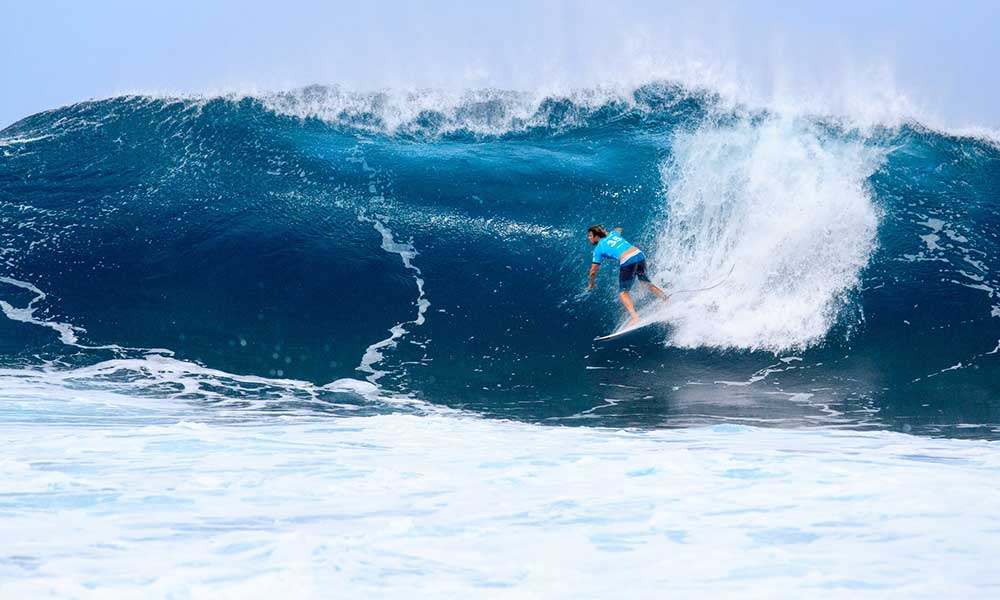Surf competitions are very entertaining and if you’re new to the sport, they serve as the perfect introduction.
The problem is that surf competitions can also be confusing to newbies and it’s hard to enjoy them if you don’t actually know what’s happening.
With that said, let’s look at how surf competitions work.
How Surf Competitions Work
Whether it’s a national or international event, surf competitions always work in the same way.
It all revolves around heats, and surfers must advance through these heats if they are to continue in the competition and be in with a chance of winning.
Each heat consists of 2 to 4 surfers that hit the waves at the same time and in the same area.
They have around 20 or 30 minutes (the exact time depends on the competition) to ride the biggest and best wave they can find.
Every wave is rated on a score of 10 and the surfer’s best two waves will then be calculated, giving them a total score out of 20.
The wave scoring is based on several different factors (including speed, power, and flow) and looks something like this:
- 1 to 1.9 – Poor
- 2 to 3.9 = Fair
- 4 to 5.9 = Average
- 6 to 7.9 = Good
- 8 to 10= Excellent
Surfers are very selective when it comes to riding waves, as they are graded on the quality and not on how many waves they ride.
What is Priority?
Priority is important in surfing competitions as it dictates which surfer has priority on any given wave.
In the World Surf League (WSL) priority goes to the surfer that is farthest in the lineup and nearest to the wave’s breaking point.
Once they have surfed the wave, priority goes to the next surfer in the lineup and so on.
Another surfer can still ride the same wave providing they don’t prevent the priority surfer from scoring.
If such an issue occurs then it is classed as “interference”, with the offending surfer receiving only one wave score, effectively reducing their maximum possible score from 20 to 10.
How Many Rounds are In a Surf Competition?
It depends on the competition, but if we use the World Surf League (WSL) competitions as an example, they have 12 heats with 3 surfers in each.
The surfers who finish first and second in these heats advance to the next stage, the round of 32.
There is also an elimination round for the bottom-placed surfers, with four heats featuring three surfers.
The lowest-placed finisher in these heats is eliminated and the other two are added to the round of 32.
In the round of 32, there are 16 heats with two surfers in each.
The winner of these heats advances while the loser is eliminated.
The competition then moves onto the round of 16, round of 8, quarter-finals, semi-finals, and the finals, all of which are staged head to head.







